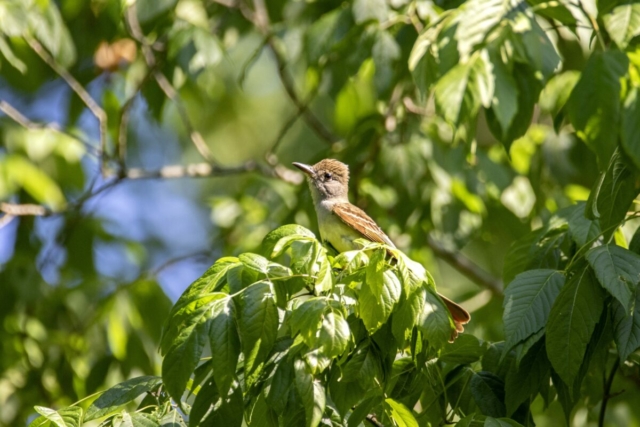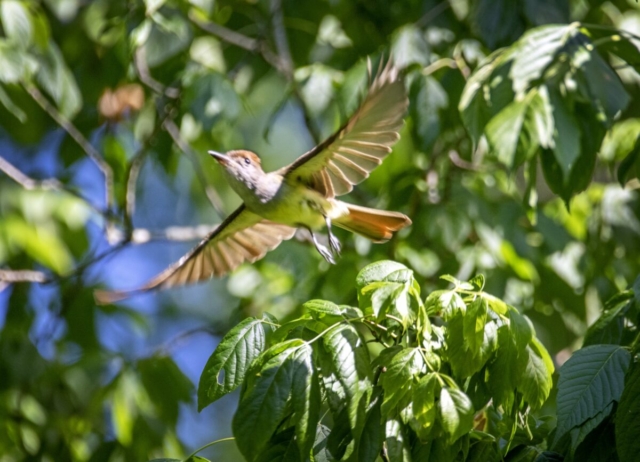All photographs were taken by Nathan Collie on location at Old Town.
Audio Recording
Conservation Status
Great Crested Flycatcher populations have remained stable in recent years. Forest fragmentation has expanded their preferred habitat of forest edges and clearings, and has even allowed their population to expand in some areas. They must compete against bluebirds, house wrens, tree swallows, European starlings, and squirrels for their nesting cavities. This competition has caused their populations to decline in some areas.
Habitat
Great Crested Flycatchers prefer habitat in mixed woodlands and at the edges of clearings. They prefer second-growth woodland habitat that contains dying trees with cavities which they can use for nesting. They will also use cavities that can be found in orchards, parks, cemeteries, golf courses, pastures, swamps, and wetlands. They can also be found in shrubby clearings with scattered trees, especially during the winter.



